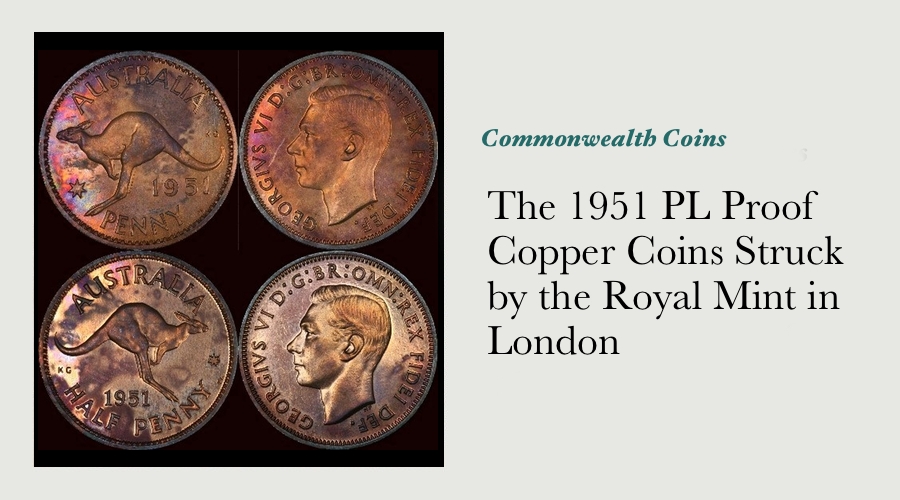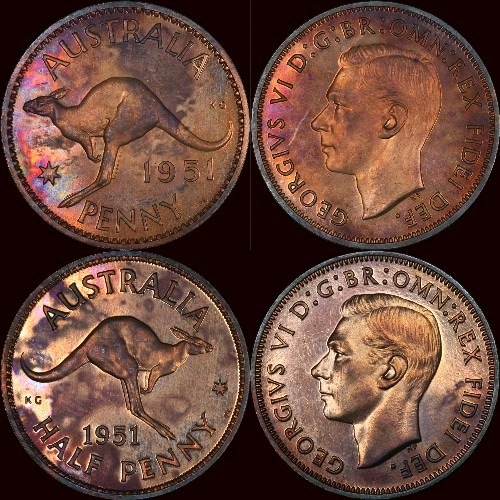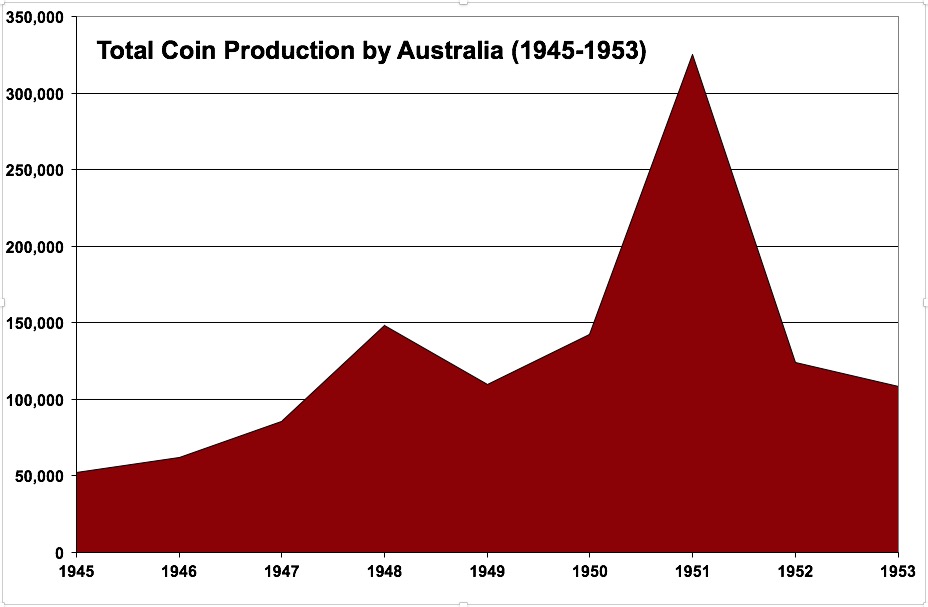The 1951 PL Proof Copper Coins Struck by the Royal Mint in London

One of the unique rewards of numismatics is to hold a coin or note in one’s hand and to contemplate current world events in light of those when the item was produced. The 1951 PL coinage struck by the Royal Mint for Australia is a case in point.
Dedicated Commonwealth coin collectors will attest that the Australian coins struck by the Royal Mint in London in 1951 are reasonably readily available in choice grade - this is actually a reflection of the strong need for circulating coinage in the Australia’s burgeoning economy that year.

While proof examples of these coins have been made available to Australian collectors on several occasions over the past few decades, it is only in recent times that their true place in Australian numismatic history has emerged.
Current economic conditions in Australia make them topical for collectors and investors alike.
Economic Stimulus via the Korean War Caused Australia's Highest Inflation Number
Part of Great Britain’s economic restructuring following World War II included the devaluation of the British Pound by 30% against the US Dollar. Australia was among the nine other nations that followed suit the same day, and this provided a healthy stimulus to our commodity exports. Our external trade received a further massive stimulus on June 25th, 1950 with the outbreak of hostilities in the Korean War.
In order to provide its servicemen with uniforms that would protect them against the harsh Korean winter, the US Government consumed vast quantities of wool from right around the world. This demand was of such a scale that the price for wool went from 64 pence per pound in March 1950 to 202 pence per pound in March 1951. “A pound for a pound” became a national catch-phrase for the price of wool during this period; schoolchildren keen for pocket money would often pluck wool off barbed wire fences!
As is often the case, the surge in export income had a multiplier effect right throughout the Australian economy.
As farmers took full advantage of their new found wealth, major grazing properties changed hands several times and wealth made its way from rural Australia to the swanky department stores of the big cities. So much so that inflation hit 22.4% during 1951 - the highest during our national history, a figure (that may be surprising for some) is far excess of that during the Whitlam era.
A rise in economic activity is always reflected in the Treasury’s demand for coinage, and the “Korean Wool Boom” in Australia was no exception.
Economic Boom = Increased Demand for Coinage
The graph displayed below shows the huge rise in total coin production in Australia during this period – up 78% during 1950 and up a further 75% during 1951.

Herein lies the explanation of why the Royal Mint was requested to assist Australia with producing its coinage for the first time since World War I – the Perth and Melbourne Mints were already working to full capacity in 1950, yet still more coinage was required. The boom ended as quick as it began, with the following economic stagnation reflected in the mintage of such coins and the 1952 and 1953 sixpences.
Another interesting aspect of these coins is that much of the production run for halfpennies (struck with the PL mintmark) was subcontracted to the Birmingham Mint.
The Royal Mint report for 1951 contains a statement from the Deputy Master that “To expedite completion of the order, a sub-contract for 5,040,000 halfpence was placed with The Mint, Birmingham, Ltd., but production of these did not start until 1952.” This of course means that there are some 5 million halfpennies out there dated 1951 and with a PL mintmark that were actually struck at the Birmingham Mint some time in 1952!
While it is not unusual for a coin bearing a particular date to be struck in another year, it is unusual for any coin to have a mintmark relating to a location different to where it was minted. To put this in perspective, Birmingham is about the same distance from London as Newcastle is from Sydney - around 160 kilometres. Surely these coins should have featured the “H” mintmark instead?
While the 1951 PL coins struck for circulation by the London Mint for Australia are readily available in choice grade, the same can hardly be said of the proofs.
While mintage figures and the distribution list for King George VI proof coins produced by the Perth Mint are readily available, this is not the case for Australian proof coins produced by the Royal Mint. The exact mintage of the 1951 PL proof coins is unknown, however the general rule for the few Australian proof coins that were struck by the Royal mint is that they are extremely rare, if not nearly unique in private hands.
There is every indication also that the proofs of these coins would have been keenly highly prized by senior figures in the Royal and Australian Mints.
The Deputy Master of the Melbourne Mint, Mr O.G. Reynolds, spent some 7 to 8 weeks in London during 1951.
In the Annual Report for 1951, the Deputy Master of the Mint stated, “All concerned in the striking of these coins derived great pleasure with being thus intimately connected with the Australian coinage.”
Any seasoned collector will attest that all of the 1951 PL coins have been superbly struck.
Given the superb quality of the finished product, we can only presume that the proofs would have been viewed with a great deal of pleasure.